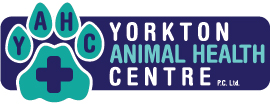Library
-
Because of differences in toy and small dogs' energy needs and size, it is essential to use pet foods specifically formulated for their requirements. Adequate diet and feeding management are important for proper growth and preventing excessive weight gain. Specific recommendations are included to select an appropriate diet. Feeding management recommendations for puppies and adult dogs are also included.
-
It is important to understand the unique nutritional needs of performance dogs. Their success depends upon a combination of genetics, training, and nutrition. It is important to match the nutrient profile to the individual dog and the activity. Your veterinarian can assist you in making optimal nutritional choices for your canine athlete.
-
Not all puppy foods are created equally, and your large breed dog needs to be fed an appropriate diet for development. An improper balance of nutrients can lead to health problems, including bone deformities. Measuring proper calorie amounts, looking for the AAFCO statement, and controlling food intake will ensure your puppy develops properly.
-
Bladder stones can be a significant problem for dogs. Bladder stones set the stage for chronic urinary tract infection, and some bladder stones (struvites) grow more quickly if the dog already has a urinary tract infection. Diet selection can play a role, and it is important to follow your veterinarian’s recommendations to prevent recurrence.
-
Obesity is the most common preventable disease in dogs affecting up to 45% of the North American dog population. Obesity contributes to disease including diabetes, arthritis, hypertension, and cancer eventually causing a decreased lifespan. Obesity can be controlled with diet and exercise plans. Regular visits to the veterinarian for body condition assessment and weight checks are crucial to weight loss as is maintaining the recommended dietary intake.
-
Obesity is the most common problem in dogs in North America and leads to an increased risk of diabetes mellitus, heart disease, and several types of cancer. Extra body fat causes increased inflammation associated with osteoarthritis. Reducing inflammation and pain can help an overweight dog to regain activity, which in turn can lead to more appropriate weight loss. Obesity can be prevented or reversed when dog owners are aware of calorie intake, body condition, and exercise.
-
Pharyngostomy tubes are placed through the skin of the neck behind the jaw through the pharynx, into the esophagus to enable ongoing nutrition in dogs that either refuse to eat or are unable to chew and swallow food. A diet will be recommended by your veterinarian but must be liquefied with water before it can pass through the tube. Step-by-step instructions are given for tube feeding. The decision to remove the tube needs to be determined by your veterinarian.
-
The American Animal Hospital Association and American Veterinary Medical Association have established guidelines to standardize preventive health care for dogs, helping them to live longer, healthier lives. This handout provides an overview of the recommendations within these guidelines and why they are so important.
-
The pro-opiomelanocortin (POMC) gene, if mutated, can contribute to increased body fat and body weight and increased food motivation in affected dogs. At this time, this gene mutation has only been found in the Labrador Retriever and Flat-coated Retriever and affects the majority of those working as service dogs. This handout explains how the POMC gene mutation was discovered, how it impacts affected dogs, and how you can support your dog if affected.
-
Congratulations on the addition of a new puppy to your family! This handout provides general care advice for your puppy, including nutrition, play and chewing behavior, housetraining, socialization, nail trimming, and basic first aid.


